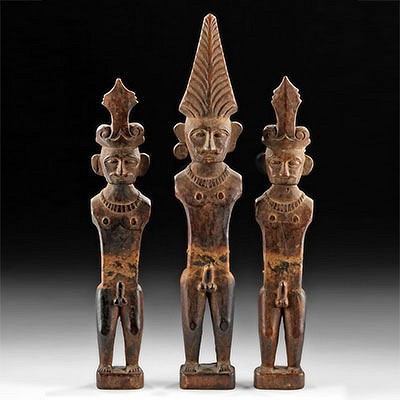Nishapur Glazed Pottery Bowl, ex-Christie's
Lot 60
About Seller
Artemis Gallery
686 S Taylor Ave, Ste 106
Louisville, CO 80027
United States
Selling antiquities, ancient and ethnographic art online since 1993, Artemis Gallery specializes in Classical Antiquities (Egyptian, Greek, Roman, Near Eastern), Asian, Pre-Columbian, African / Tribal / Oceanographic art. Our extensive inventory includes pottery, stone, metal, wood, glass and textil...Read more
Categories
Estimate:
$1,800 - $2,700
Absentee vs Live bid
Two ways to bid:
- Leave a max absentee bid and the platform will bid on your behalf up to your maximum bid during the live auction.
- Bid live during the auction and your bids will be submitted real-time to the auctioneer.
Bid Increments
| Price | Bid Increment |
|---|---|
| $0 | $25 |
| $300 | $50 |
| $1,000 | $100 |
| $2,000 | $250 |
| $5,000 | $500 |
| $10,000 | $1,000 |
| $20,000 | $2,500 |
| $50,000 | $5,000 |
| $100,000 | $10,000 |
| $200,000 | $20,000 |
About Auction
By Artemis Gallery
Jun 25, 2020
Set Reminder
2020-06-25 10:00:00
2020-06-25 10:00:00
America/New_York
Bidsquare
Bidsquare : CLEARANCE - Ancient, Pre-Columbian, Ethno Art
https://www.bidsquare.com/auctions/artemis-gallery/clearance---ancient-pre-columbian-ethno-art-5264
Featuring discounted pricing on antiquities from Egypt, Greece, Italy, and the Near East...plus Viking, Asian, Pre-Columbian, Tribal, Russian Icons, Spanish Colonial, Fine Art, more! Starting prices have been reduced up to 65% from original auction prices - perfect for dealers and collectors. Artemis Gallery info@artemisgallery.com
Featuring discounted pricing on antiquities from Egypt, Greece, Italy, and the Near East...plus Viking, Asian, Pre-Columbian, Tribal, Russian Icons, Spanish Colonial, Fine Art, more! Starting prices have been reduced up to 65% from original auction prices - perfect for dealers and collectors. Artemis Gallery info@artemisgallery.com
- Lot Description
**Originally Listed At $1200**
Near East, Iran/Persia, Nishapur, ca. 10th century CE. A steep-walled terracotta bowl with a beautiful, stylized Kufic (the earliest form of Arabic) script in a register around its central interior. The inscription is black, on a background of golden yellow. The Kufic is inverted, encircling a single dot in the very center of the bowl. Nishapur ware used a white slip on a terracotta body with designs painted in slips of bright colors - mixing the colors with slip prevented them from running, leading to the crisp iconography like on this example. Size: 12.75" W x 3.45" H (32.4 cm x 8.8 cm)
Kufic is the earliest form of Arabic calligraphy, used as the main script to copy the Qur'an until the 11th century. It was used on Seljuk coins and monuments as well as ceramic items like this one. The inscriptions on bowls like this one are Arabic proverbs - in fact, some of the first extant examples that appear in the Islamic world. Each inscription is read by turning the bowl counterclockwise. Some of these inscriptions are a hadith of the Prophet Muhammad, and others are referencing social codes from the Samanids, who deeply valued hospitality and generosity.
Provenance: Royal Athena, New York, USA collection; ex-Christie’s, London, UK, April 1989
All items legal to buy/sell under U.S. Statute covering cultural patrimony Code 2600, CHAPTER 14, and are guaranteed to be as described or your money back.
A Certificate of Authenticity will accompany all winning bids.
We ship worldwide and handle all shipping in-house for your convenience.
#151740Expertly repaired and restored with some areas of touch-up to the pigment. Nice deposits on surface.Condition
- Shipping Info
-
All shipping is handled in-house for your convenience. Your invoice from Artemis Gallery will include shipping calculation instructions. If in doubt, please inquire BEFORE bidding for estimated shipping costs for individual items.
-
- Buyer's Premium



 EUR
EUR CAD
CAD AUD
AUD GBP
GBP MXN
MXN HKD
HKD CNY
CNY MYR
MYR SEK
SEK SGD
SGD CHF
CHF THB
THB

















